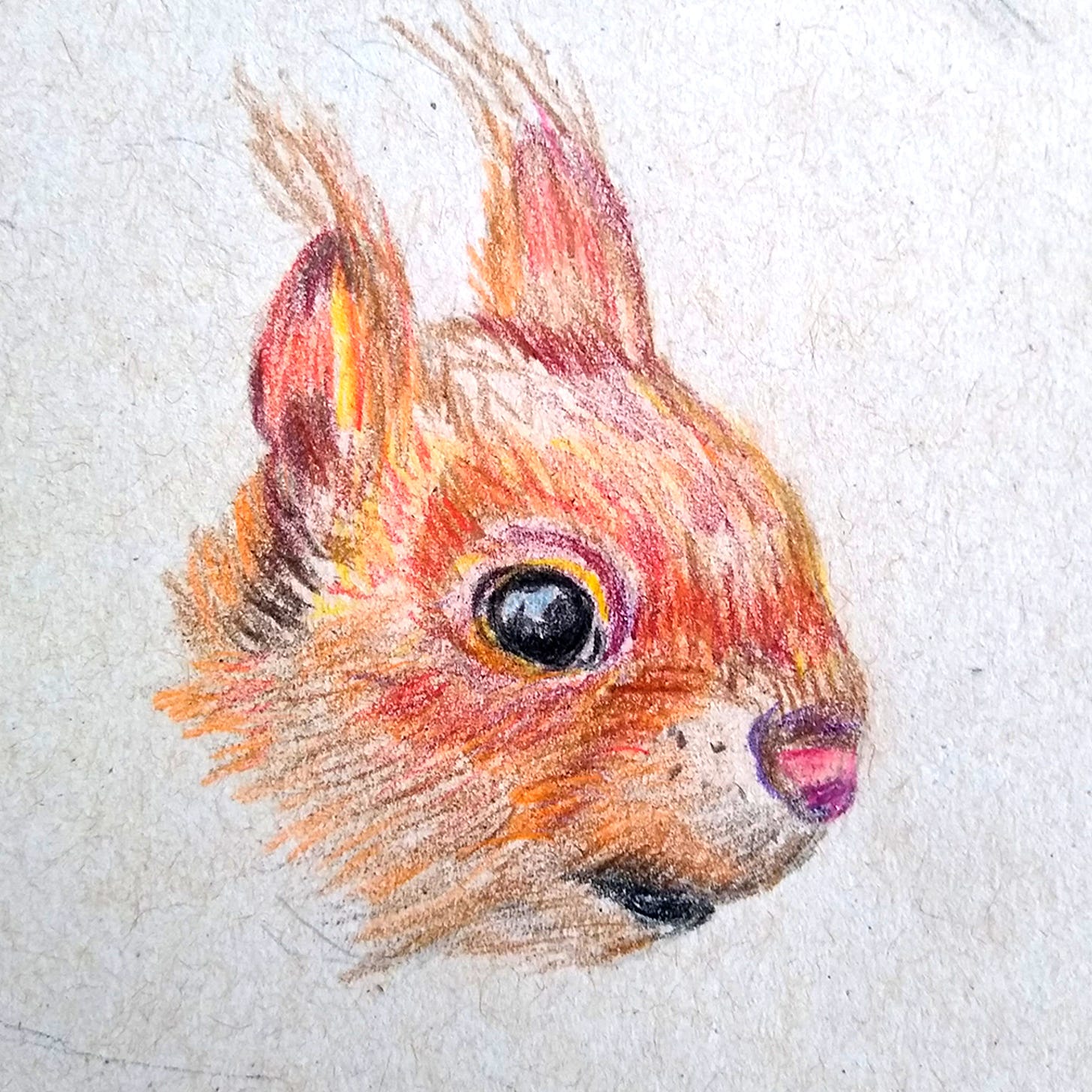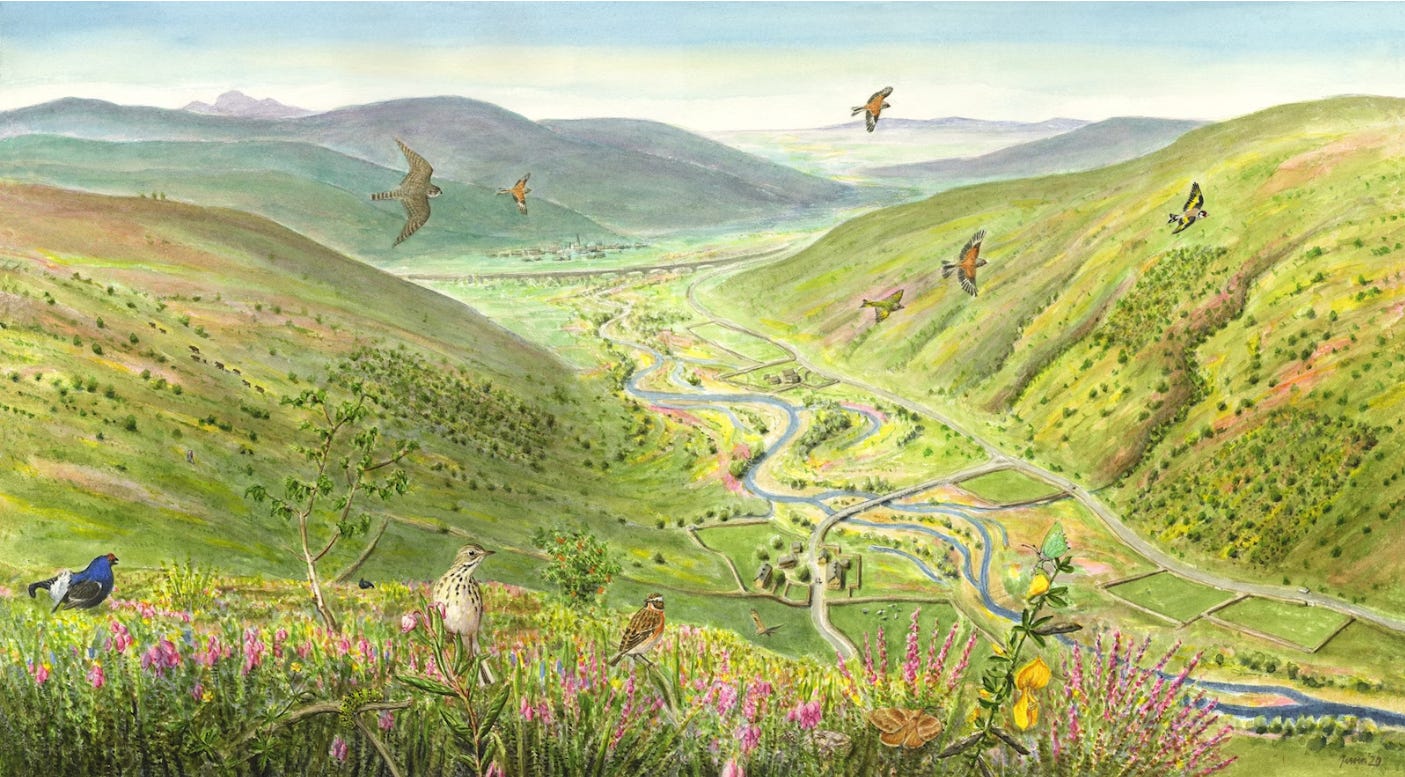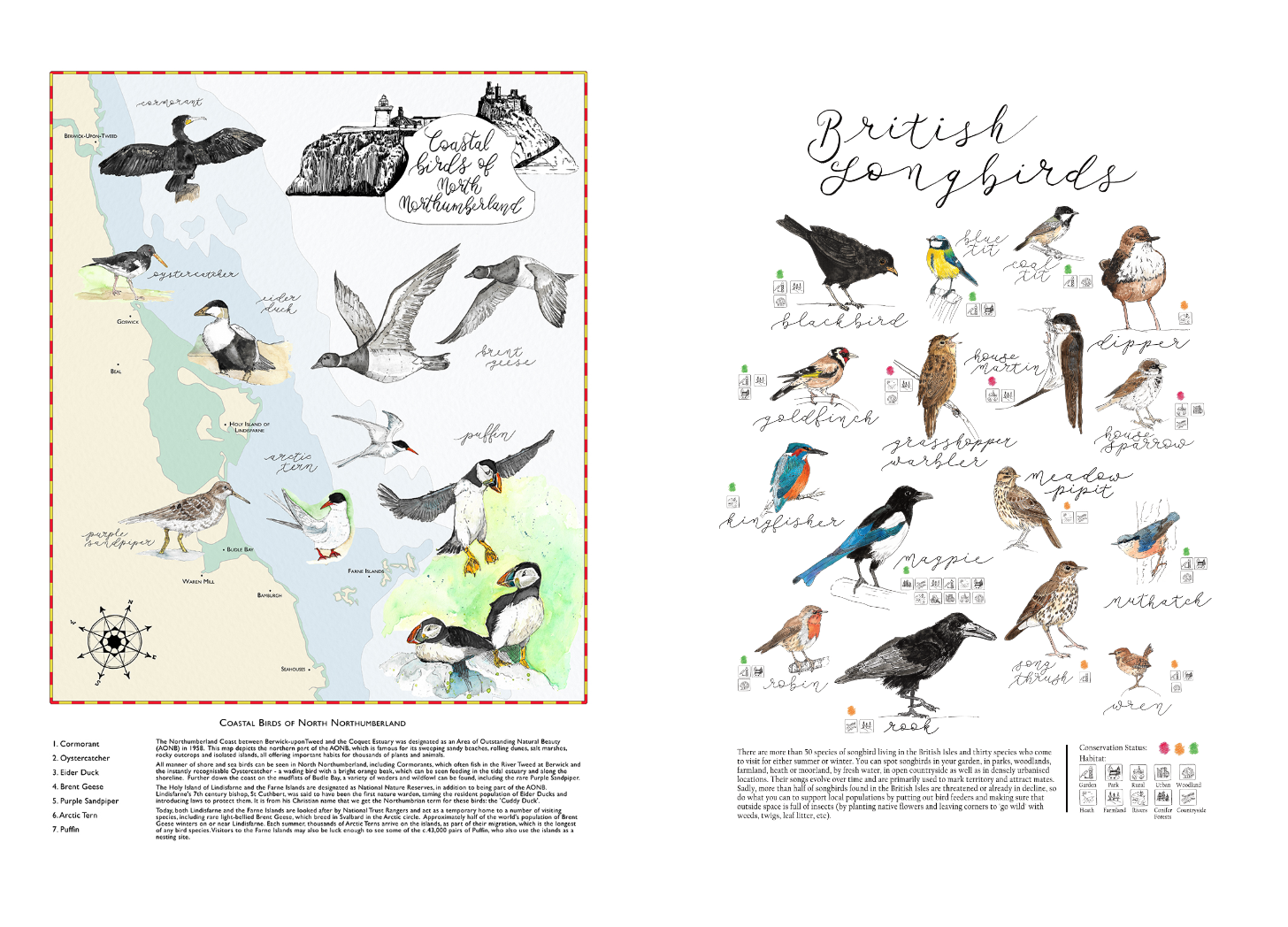Illustrating to support a Wilder Future
This week (21st - 27th April) is National Mammal Week here in the UK and this year's theme is looking at wildlife depletion with 'Where the Wild Things Should Be'.
Where the Wild Things Should Be
There are now multiple generations of us who don’t know what the countryside (or even our gardens and urban green spaces like parks) should - and could - look like. How they were once filled with birdsong, insects and the animals that fed upon these things. Each decade since the beginning of the twentieth century has brought new warnings of species under threat, but as our world has become increasingly focused around an urban, indoor and now screen-based existence, we’ve simply ceased to notice and - therefore - to care.
I’ve written before about how the UK is one of the most nature-depleted countries in the world; since the 1970s, UK species have declined by 19% on average and nearly 1 in 6 species are now threatened with extinction. Even species that we think of as familiar and numerous have suffered declines. For example, the common House Sparrow has seen populations decline by nearly 70% since the late 1970s across all the areas where they used to be common - so urban and suburban habitats as well as farmland. Declining populations of insects, increased levels of pollution, loss of suitable nesting sites, increased prevalence of disease (exacerbated by a warming climate) and increased levels of predation from the UK's c12.5 million pet cats have all contributed to this loss in urban settings.
This is partly why this year’s National Mammal Week theme is ‘Where the Wild Things Should Be’.
National Mammal Week is organised by the Mammal Society and is a celebration of Britain's more than 90 mammal species, raising awareness of the challenges they face, with 1 in 4 at threat of extinction. The Mammal Society have outlined three steps that we can all take this week to help restore the balance of nature so that our native and naturalised wild mammals can once again thrive in the British landscape:
1. Take part in the Mammal Discover Challenge - a citizen science project asking people to monitor mammals visiting their gardens and local areas.
2. Take local action to help mammals: from mammal-friendly garden tips to running a local campaign.
3. Write to your MP: unless we raise it with our representatives, supporting conservation and supporting positive policy shifts won't be on the table at a national level.
You can find out more about each of these actions on the Mammal Society website.
Drawn to Nature is a publication that brings together my observations of the natural world, from my garden to the countryside, in a variety of formats. You'll find pages from my sketchbook, photographs and general writing on the topic of nature, as well as a monthly diary of things I’ve observed. And I’ll regularly share ideas for simple ways that you can engage with, observe and record nature, wherever you are. If this sounds good, why not subscribe?
Art and Nature
In his 1984 book, Biophilia, Edward O Wilson introduced and popularised something he termed the ‘biophilia hypothesis’. The hypothesis suggests that humans gravitate towards seeking connections with nature. If you've ever paused to gaze at a sunset, admired the acrobatic abilities of a starling murmuration, or simply found that looking out at a calm sea has you filling your lungs more deeply, you'll appreciate that our nature connection brings a wealth of positive benefits.

As I’ve written about before, a growing body of scientific research has begun to show what humans have long known intuitively - that nature stimulates our senses, activates our parasympathetic nervous system (which soothes us and reduces stress), helps our concentration and focus and can even introduce feelings of awe and wonder to our everyday lives.
However, scientists have even begun to discover that simply looking at depictions of landscapes, plants and flowers, or even abstract art that uses earthy colours and organic shapes, allows people to visualise nature enough to represent a form of contact and connection. The viewer can feel the pulling connection to nature with illustrations of trees and flowers, or a beautiful painting of a sea, and feel more calm. Biophilic art (ie art inspired by nature) stimulates our inherent affinity for the natural world, helping us to connect with it, and reflect on that relationship, more consciously.
Art can transform how we see and engage with the world. It can make us question our own assumptions, make us think more deeply (or differently) about a subject and it can also inspire change. The impact of a piece of art can be long-lasting and far-reaching. For these reasons, it can be a powerful supporter of the aims of nature conservationists, looking to explore and change how humans interact with the natural world.
Perhaps most importantly, art and illustration can help us to understand what is missing from the natural environment, because how can we miss what we don't know should be there?
Art x Conservation
When we think of nature conservation, we immediately picture scientists and activists and usually famous names like David Attenborough and Chris Packham leap to mind. However, creatives can play an equally important role in (re)imagining a wilder, restored landscape and the flora and fauna that once was there, whether that is through storytelling, education, advocacy or visual inspiration.
Researching this article, I came across a series of beautiful illustrations by Jeroen Helmer for Rewilding Britain that showed the wealth of biodiversity that could be restored if we changed how we managed our upland landscapes in the UK. (Read more about this here)
Another example is this project for an interpretation board for the North Devon Area of Outstanding Natural Beauty by illustrator Lizzie Harper, where Lizzie was asked to illustrate an idealised hay meadow, full of the wild flowers and animals that the North Devon AONB hopes to restore at Bentham Bay.
In addition to depicting what could be present in a restored landscape, artists can also play a role in recording the diversity of plants and animals present in some of our landscapes that have been managed well for nature.
Farmers can and do play an incredible role in restoring habitats, protecting wildlife, and strengthening local communities and Kypie Farm here in North Northumberland is an excellent example of this in practice. I worked on a project for them last year to design a Welcome and Information Board to help visitors understand the farm’s landscape. The farm has a strong educational programme, offering farm walks, bird watching, mini beast hunts and many more activities that help children and young people explore nature, as well as learning where their food comes from and the part farmers play in looking after the environment. One of the key aims for the Welcome Board was to highlight some of the wildlife that can be spotted on the farm, thanks to the way the land is managed.

What was also lovely about the project was how much it chimed with my own interests in nature and wildlife, sustainability and steps we can take to halt or reverse biodiversity loss. Creating the educational content for the Board was something I enjoyed almost as much as the illustration work.
Nature as Muse and Mission
Wilder landscapes don’t just make better habitats, they make better inspiration for creatives, too!
When I started to think about changing career to work as an artist and illustrator, I initially thought I’d be most drawn to architectural illustration. I studied the history of architecture as part of my degree and have always been interested in the quirky detail of buildings. Whilst drawing all sorts of landmarks definitely appeals to me, I’ve gradually come to realise that I’m most regularly inspired by British wildlife in all of its forms: flowers and plants, trees, birds, animals and the habitats that they call home.
And - interestingly - I’m often called to include some form of educational information alongside my illustrations. Two of my best-selling nature-inspired designs are my Coastal Birds of North Northumberland and British Songbirds, both of which include information about habitat and conservation status, making them educational as well as decorative!
Can you remember the last time you were inspired by an artwork or illustration that depicted nature? How did it make you feel?









Beautiful illustrations. As an artist, I always think of preserving in paint what is disappearing before my eyes, the peril that the coastline faces with rising sea level and the animals, plants and birds that are declining because of loss of habitat. I feel like I am painting living memories, a place that won't be in existence in 50 or 100 years. It feels quite hopeless sometimes. Thank you for the reminder to think about art as envisioning the possibilities of preservation of the landscape and the possibilities of making a positive change.